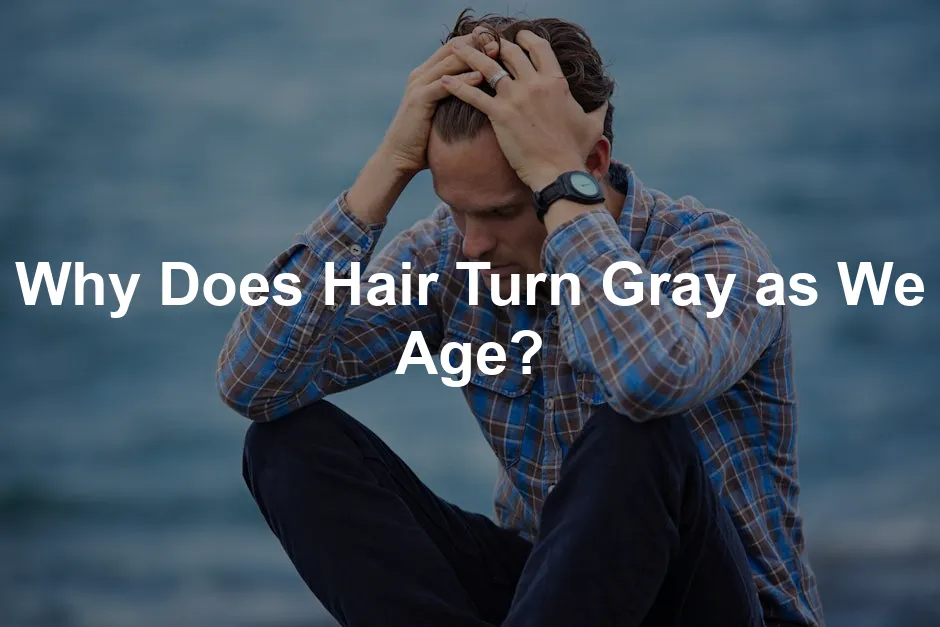
Why Does Hair Turn Gray as We Age?
Introduction
Graying hair is a natural part of aging. Most people start noticing their first gray strands in their mid-30s. By age 50, many have a head that’s at least half gray. But wait! There are some myths floating around. Many believe stress alone can turn hair gray overnight. Spoiler alert: it’s more complex than that.
Understanding why our hair changes color as we age involves looking at biological and genetic factors. The key players here are melanin and melanocytes. Melanin is the pigment responsible for our hair color, while melanocytes are the cells that produce it. As we age, these cells become less efficient, leading to the graying process. Let’s unravel this mystery together!
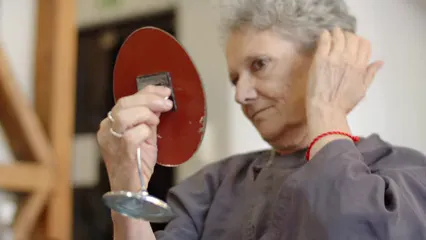
The Science of Hair Color
What Gives Hair Its Color?
Hair color originates from a pigment called melanin. There are two main types: eumelanin and pheomelanin. Eumelanin comes in dark shades, while pheomelanin gives rise to lighter colors. Think of them as the artists behind your hair’s canvas.
Melanocytes, the unsung heroes of the hair follicle, are responsible for injecting melanin into each hair strand. When you were young, these cells were like a well-oiled machine, producing vibrant colors. However, as the years roll by, these hardworking cells start to slow down. And with fewer melanocytes, guess what? Less melanin means gray hair!
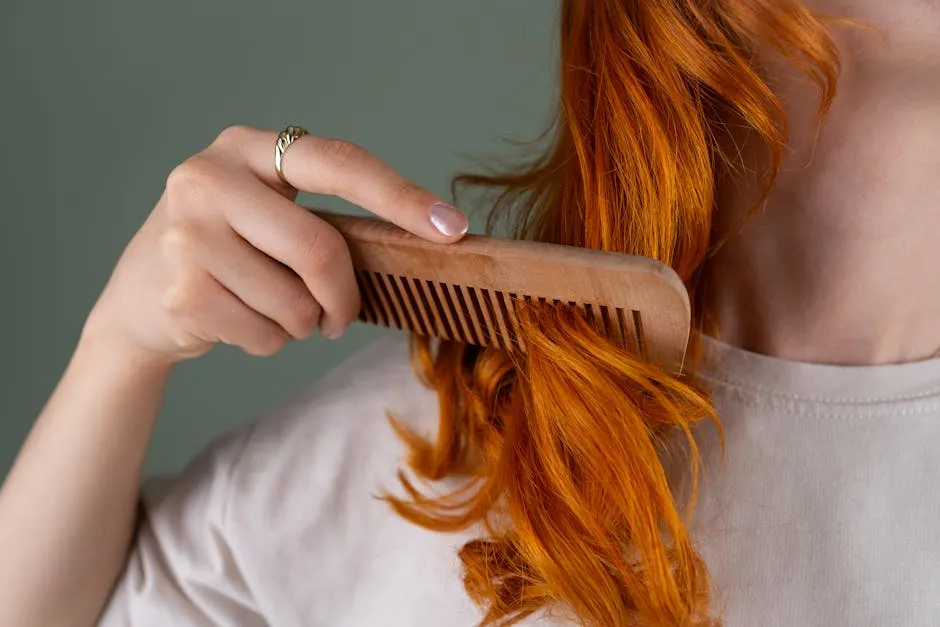
How Aging Affects Melanocyte Function
Aging has a powerful impact on our melanocytes. Over time, the number of these pigment-producing cells declines. It’s like a factory closing down; less production leads to more gray hair. As a result, the hair that grows lacks the vibrant hues of youth and starts to appear gray or even white.
This decline is not uniform. Some individuals might experience this change earlier than others, often influenced by genetics. If your parents went gray early, you may want to brace yourself! Understanding this process helps demystify why some of us embrace the silver strands while others might feel a little anxious about them.
So, there you have it! Graying hair isn’t just a sign of aging; it’s a fascinating biological process that highlights the intricate workings of our bodies.

Factors Influencing Hair Graying
Genetic Predisposition
Genetics play a starring role in when your hair decides to embrace its gray side. You might have inherited the gene that determines your hair’s journey into silver from your parents. Specifically, a gene called IRF4 has been linked to hair pigmentation. A 2016 study in Nature Communications revealed that this gene helps regulate melanin production, the pigment that gives hair its color.
Now, if your family tree is full of silver strands, then brace yourself; your hair might follow suit! The age at which people start graying varies significantly among different ethnic groups. Caucasians often see their first gray hairs in their mid-30s. In contrast, Asians usually start noticing them in their late 30s, while individuals of African descent may not see significant graying until their mid-40s. Genetics shapes this timeline, making it a crucial factor in the graying process.
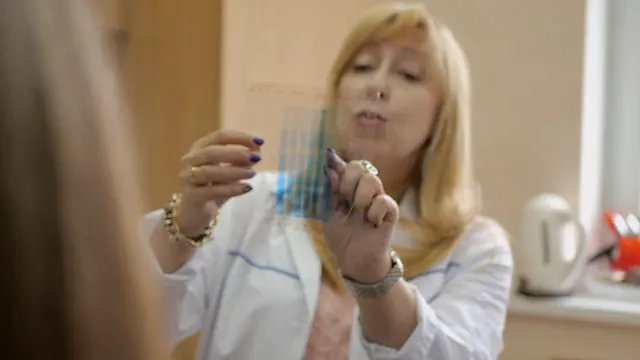
Environmental Factors
Stress
Ah, stress—the ever-present villain in our lives! It turns out, stress isn’t just a mental burden; it may also influence your hair color. While it won’t magically change the color of a single hair strand, stress can contribute to a common condition called telogen effluvium. This condition causes hair to fall out more rapidly than normal, and when it grows back, you might find it sporting a gray hue instead of its original color.
Research has shown a link between psychological stress and the depletion of melanocytes, the cells responsible for producing melanin. A 2020 study found that stress-induced responses can lead to the loss of these pigment-producing cells. Essentially, the more stressed you are, the less color your hair might have. So, the next time life throws curveballs your way, remember that deep breaths might do more than just calm your mind; they may help your hair hang onto its youthful color.
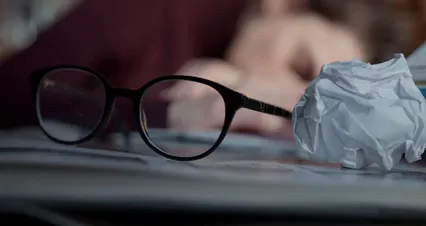
Diet and Nutrition
What’s on your plate could be affecting your hair color, too! Nutritional deficiencies, particularly a lack of essential vitamins, can play a role in premature graying. Vitamin B12 stands out as a crucial player in maintaining hair pigmentation. A deficiency in this vitamin can lead to hair losing its color and turning gray prematurely.
A 2018 study published in the Journal of Cosmetic Dermatology found a correlation between diet and premature gray hair. It suggested that those who maintain a balanced diet rich in vitamins and minerals may delay the onset of graying. So, munch on those leafy greens and consider adding a Vitamin B12 Supplement to your routine if you’re feeling a bit gray around the edges!

Smoking and Pollution
If you’re a smoker, your hair might be paying the price. Research has shown that smoking is linked to premature graying, with smokers going gray an average of three years earlier than non-smokers. The chemicals in cigarettes can damage the melanin-producing cells, leading to a loss of pigmentation.
But it’s not just smoke that’s causing trouble. Environmental pollutants can also wreak havoc on your hair health. These pollutants generate free radicals that contribute to oxidative stress, damaging the cells responsible for producing melanin. By protecting yourself from both smoking and pollution, you may be doing your hair a favor and keeping those gray hairs at bay a bit longer.
In summary, while aging is the primary reason our hair turns gray, genetics, stress, diet, and environmental factors all play significant roles. Understanding these influences can empower you to take steps to maintain your hair’s color for as long as possible. Embrace your hair’s journey, and remember that every gray strand tells a story!

Psychological and Lifestyle Factors
The Role of Stress and Mental Health
Stress is the unwelcome guest that overstays its welcome. It seems to pop up uninvited, and it doesn’t just mess with our minds; it may also wreak havoc on our hair! Chronic stress can trigger telogen effluvium, a condition that speeds up hair shedding. When hair follicles shed prematurely, the new growth may emerge lacking the melanin that gives hair its color.
A 2020 study highlights how stress can lead to a depletion of melanocyte stem cells, the very cells responsible for producing melanin. Imagine these stem cells as tiny workers in a factory. When the workplace becomes chaotic (thanks to stress), productivity plummets, and the factory shuts down. The result? Gray hairs start popping up where vibrant colors once flourished.
Anecdotal evidence supports this connection. Many people claim to have noticed their first gray strands during particularly stressful periods—like exams, job changes, or even planning a wedding! While the science is still evolving, researchers are beginning to connect the dots between mental health, stress, and hair pigmentation. So, next time you’re feeling overwhelmed, remember: your hair might be feeling it too!

Lifestyle Choices
Lifestyle choices play a significant role in how quickly our hair decides to go gray. Yes, we’re talking about smoking, drinking, and your favorite guilty pleasure—unhealthy snacks! Studies have shown that smoking can lead to gray hair appearing three years earlier than non-smokers. The chemicals in cigarettes might damage the melanin-producing cells, leaving you with a head full of gray.
Alcohol consumption isn’t off the hook either. Excessive drinking can lead to deficiencies in essential vitamins like B12, which are crucial for maintaining hair color. A balanced diet rich in nutrients keeps those melanin factories running smoothly. Think of it as giving your hair a spa day—because who doesn’t want that?
Moreover, poor physical health can accelerate the graying process. Conditions like obesity and high blood pressure can contribute to stress and oxidative damage, causing hair to lose its luster. Prioritizing physical health through exercise and a nutritious diet can help maintain that youthful sheen in your locks. To support your healthy lifestyle, consider a Plant-Based Protein Powder that fits your dietary needs!

In conclusion, managing stress levels and making healthier lifestyle choices can help delay the onset of gray hair. So, whether it’s through yoga, a balanced diet, or kicking that smoking habit, every little change counts. Embrace the journey and remember, gray hair is just another chapter in your story!

Emerging Research on Gray Hair Reversibility
Recent Findings
Recent studies have sparked excitement in the quest to reverse gray hair. Researchers at Columbia University found a fascinating link between stress management and the potential reversal of gray hair. They examined hair samples from volunteers and compared them to their stress levels. The results? Participants who reduced stress through various means, like vacations or resolving conflicts, reported a return to their original hair color. This suggests that stress reduction could play a crucial role in hair pigmentation. While these findings are promising, they highlight that simply managing stress won’t guarantee a reversal. It appears that a threshold must be met for hair to regain its color. As hair ages biologically, the chances of successful repigmentation decrease.
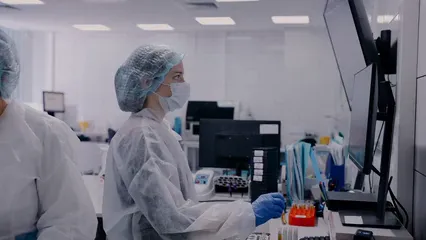
Potential Treatments
The hunt for effective treatments to reverse gray hair is gaining momentum. Scientists are studying medications and therapies that might restore hair color. One area of focus is the role of antioxidants and pseudocatalase in maintaining hair health. Antioxidants combat oxidative stress, which can damage melanocyte stem cells. Pseudocatalase, an enzyme that helps break down hydrogen peroxide in hair follicles, shows promise in reducing hair graying. In preliminary research, some medications have indicated a potential for restoring pigmentation, although they may come with side effects. While results are mixed, ongoing research remains hopeful for effective solutions that could keep our locks looking youthful. You might also want to explore some Anti-Aging Skin Care Set to complement your hair care routine!
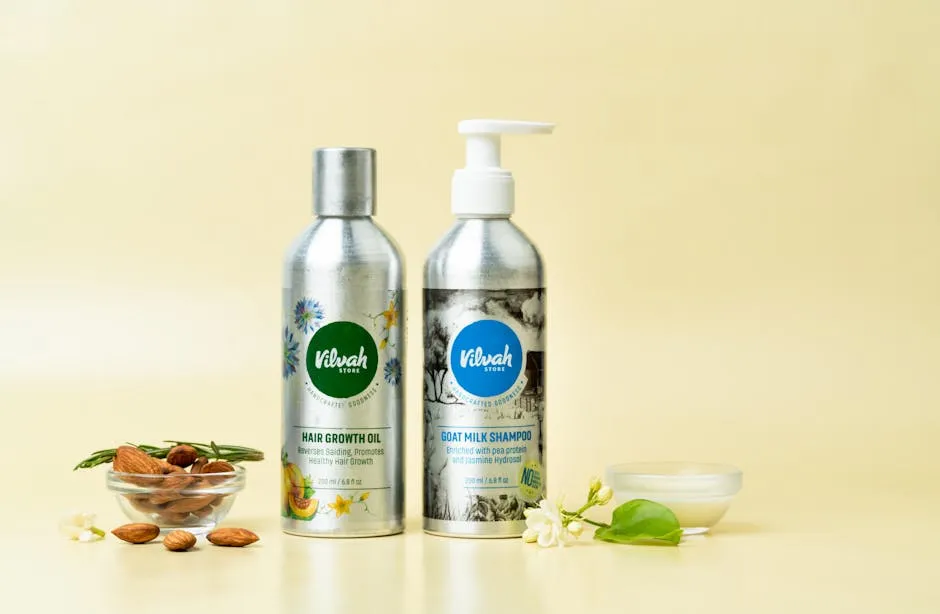
Future Directions in Hair Graying Research
Understanding the mechanisms behind hair graying could have broader implications for health issues beyond aesthetics. The relationship between stress, melanocyte function, and hair pigmentation suggests that tackling stress could benefit overall health. Additionally, insights gained from studying gray hair may inform research on aging and regenerative medicine. As scientists continue to explore the complexities of hair pigmentation, the potential for innovative treatments grows. The future looks bright for those hoping to turn back the clock on their hair color, blending scientific discovery with self-care practices to enhance both appearance and well-being.
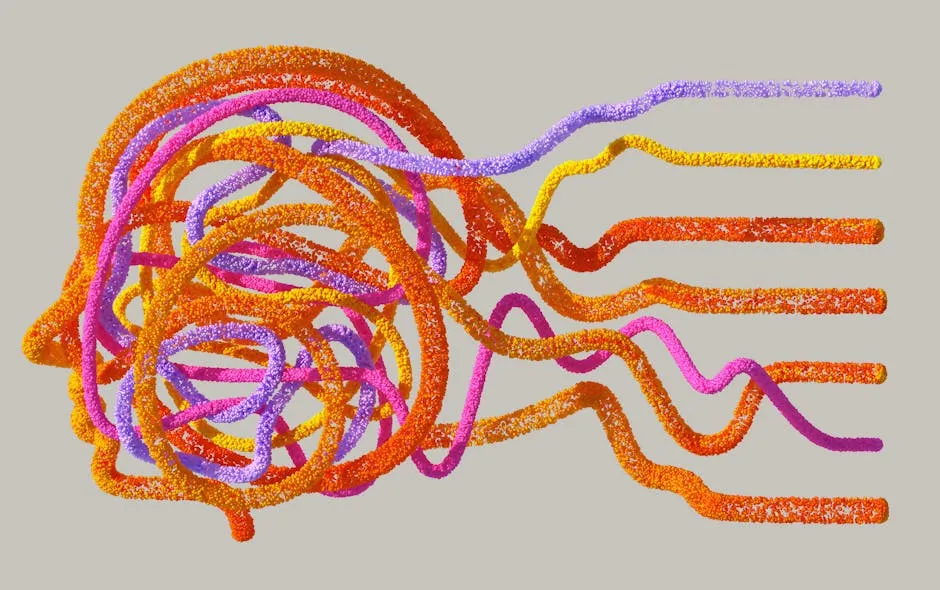
Conclusion
Graying hair is a natural part of life, marking a transition many of us experience as we age. We discussed how genetics play a pivotal role in when your first gray hair makes its grand debut. Factors like the gradual decline of melanocytes, the cells responsible for pigment production, contribute to this process. Stress, diet, and lifestyle choices also influence how quickly our hair loses its color.
It’s essential to remember that this change is a sign of wisdom and life experience, not just age. Rather than feeling anxious about gray strands, embrace them! They tell the story of your journey, capturing moments, lessons, and adventures. Each gray hair is a badge of honor, a testament to the experiences that have shaped you. So, celebrate your silver locks—they’re a beautiful part of your narrative!
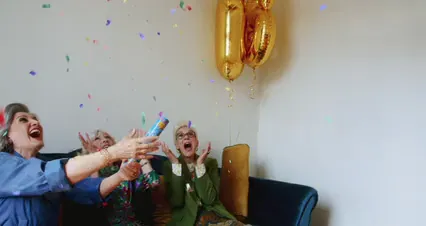
FAQs
Can stress really turn hair gray?
Stress is often blamed for turning hair gray, but the reality is more nuanced. While stress doesn’t change the color of individual hair strands, it can trigger a condition called telogen effluvium. This leads to faster hair shedding, allowing gray hairs to become more visible. Research indicates that stress can deplete melanocyte stem cells, reducing melanin production over time. So, less stress might keep your hair color intact a bit longer!
At what age do most people start to go gray?
Most people start noticing gray hair in their mid-30s, but this varies among ethnic groups. Caucasians typically see their first gray strands around 35, while Asians notice them in their late 30s. Individuals of African descent often experience graying later, around their mid-40s. Genetics largely dictate this timeline, so take a peek at your family history!
Is there a way to prevent gray hair?
While graying is mostly inevitable, certain lifestyle changes may help slow the process. Eating a balanced diet rich in vitamins—particularly B12—can support melanin production. Regular exercise, avoiding smoking, and managing stress levels can also contribute to healthier hair. However, no definitive treatment can fully prevent gray hair, so embrace the journey!
Can diet influence hair graying?
Yes! A well-balanced diet plays a crucial role in maintaining hair pigmentation. Deficiencies in vitamins, particularly B12, can lead to premature graying. Foods rich in antioxidants and vitamins help combat oxidative stress, which can damage melanin-producing cells. So, load up on those colorful fruits and veggies for healthier hair!
Is gray hair associated with any health issues?
Gray hair can sometimes signal underlying health conditions, especially if it occurs at a young age. Conditions like vitamin B12 deficiency, thyroid disease, and vitiligo can lead to premature graying. If you notice sudden changes in your hair color, it might be worth consulting a healthcare professional to rule out any health concerns. Remember, your hair can offer clues about your overall well-being!
Ah, stress—the ever-present villain in our lives! It turns out, stress isn’t just a mental burden; it may also influence your hair color. To learn more about the effects of stress in modern society, check out this insightful piece: why do we feel stressed in modern society.
Understanding the impact of stress can help us manage its effects on our health and well-being. why do we feel stressed in modern society
Please let us know what you think about our content by leaving a comment down below!
Thank you for reading till here 🙂
All images from Pexels




